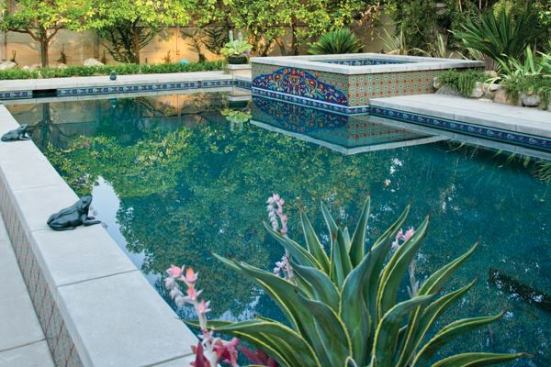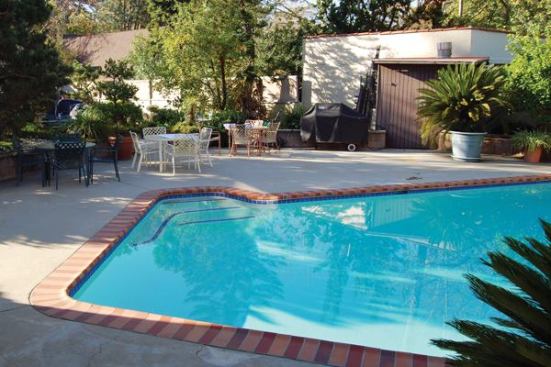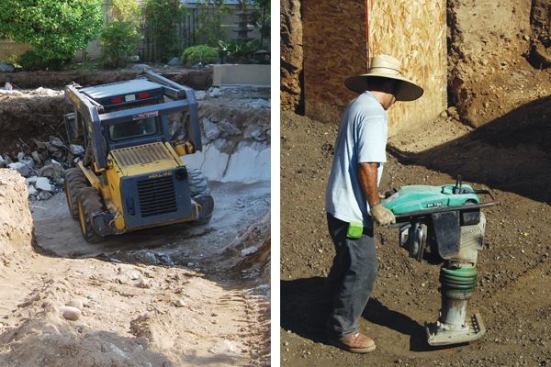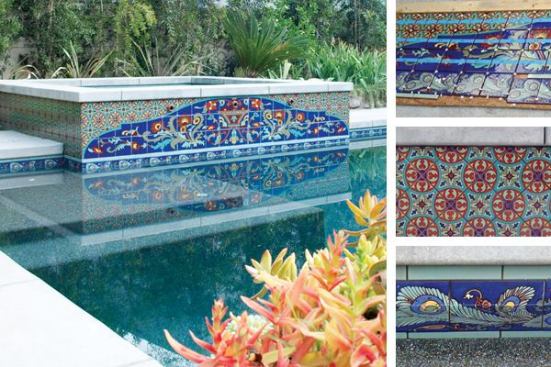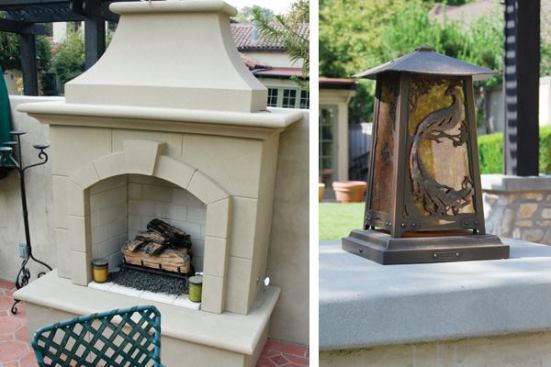Delicate detail
The homeowners and builder wanted something more era-appropriate than a flat spillway for the spa. Instead, they decided that three 1-1/2-inch copper pipes should be placed 3 inches below the top of the wall. Rather than a wide, clean sheet, this would cause individual rivulets to flow from the spa to the pool.
But the pipes had to be set in very specific places in relation to the tile pattern. “The copper pipe was coming through a flower in the tile,” Lokker says. “That had to be precise. And we didn’t want to play with pushing the tile left or right or up or down. So the spouts had to adjust to the tile design.”
To do this, Lokker decided against placing the pipes while shooting the gunite.
Instead, he left three slots, measuring about 6 inches wide and 4 inches deep each, in the raised wall. During the tiling, when Tejada was one row below where the pipes would go, the team measured where the pipes needed to sit. They then placed the pipes exactly, and backfilled the rest of the slot, using concrete with a waterproofing agent.
Another waterproofing agent was then applied over the backfilled area to seal it off.
Ceramic rings were placed on the ends of the pipe, serving as a faceplate to conceal the copper from view and leave a finished look.
